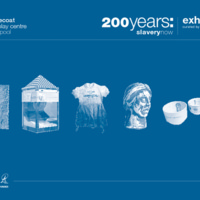
200 Years: Slavery Now
Bluecoat Display Centre is a contemporary craft and design gallery in Liverpool. The 200 Years: Slavery Now exhibition aimed to draw attention to modern slavery, both within the UK and in the wider international context. It brought together ten artists whose work reflected these concerns, and who were committed to highlighting the existence of slavery today through the creation of artefacts and the development of personal narratives. Materials used included ceramics, mixed media installations and textiles. Some of the themes covered included the exploitation of migrant workers, sex trafficking, 'sweat shop' mass production, and commemorating the Middle Passage and the workers of Manchester's cotton mills. The exhibition was curated by Professor Stephen Dixon, with the support of the Craft and Design Research Centre, MIRIAD, at Manchester Metropolitan University.
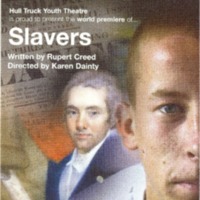
Slavers
Hull Truck Theatre supported Wilberforce 2007 with two specially commissioned productions, Slavers and Sold, and a playwright festival. For one week in August 2007, Hull Truck Youth Theatre presented Slavers, set in 2007, which told the story of abolition through the eyes of young people in Hull. Written by Rupert Creed and directed by Karen Dainty, the play followed a group of school leavers and their potentially prosperous business-start up, trading in human cargo. When some started questioning the morality behind the business, the audience was transported back to the debates of Wilberforce and his allies two hundred years previously. Another play, ‘Sold’, in conjunction with Liverpool Hope University, sought to raise awareness about the victims of human trafficking and sexual exploitation today.
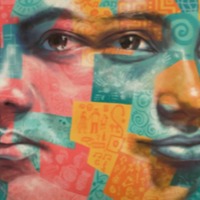
Dina
In 1993, Dina Chan was exploited in northern Cambodia. Women are internally trafficked for sexual exploitation in Cambodia, usually from rural areas to the country’s capital, Phnom Penh, and other secondary cities. Cambodian women are also brought to Thailand and Malaysia for commercial sexual exploitation. An orphan who got into debt for overdue rent payments and tuition fees, Dina was trafficked from Phnom Penh to Stroeung Treng at the age of 17. Her narrative describes police corruption, starvation, and gang rape. She points out the irony that she fought for others’ freedoms as a soldier, “only to become enslaved,” and rejects the response of “pity” to her story. She also issues a call for prostitutes to unionize and “fight for basic rights.” On behalf of herself and her “sisters,” Dina demands recognition of her humanity: “We are people, we are women and we want to be treated with respect.”
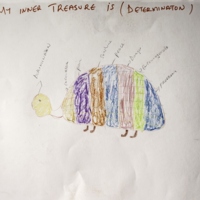
Almasi
Almasi was enslaved within Kenya. She was deceived by a childhood friend who said she could work as a cleaner in Mombasa. But instead she was taken to a house that served as a brothel and enslaved for six months. She escaped by jumping out of a moving vehicle. She later discovered that she was HIV positive. As part of the process of narrating her story, she also created artwork. Her narrative explains the images of a wing and a tortoise. Almasi is a fictional name to protect the narrator's identity.

Shandra
Shandra Woworuntu graduated from college with a major in Finance and Bank Management in her native Indonesia. Looking for an opportunity to work in the US, she responded to an advertisement for a job that promised a six month position in the hotel industry in Chicago. But the agent who met her at New York City’s JFK airport drove her to the brothel and took control of her passport and identification. When she tried to protest, he put a gun to her head. She was forced to work for 24 hours a day at different brothels throughout New York and Connecticut and eventually escaped by jumping out of a bathroom window in Brooklyn. Her traffickers were prosecuted and Shandra now works with anti-human trafficking advocacy groups and is a legislative lobbyist in Washington DC.
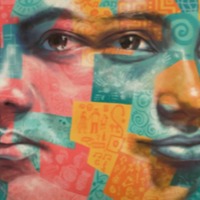
Faith
Faith was taken from her home country of Zimbabwe into South Africa in 2004. Like many young Zimbabwean women, she was trafficked through the false promise of employment. Other Zimbabwean women are tricked into slavery through promises of marriage and education, and some are simply abducted. Zimbabwean women are also forced into prostitution in the UK, the US and South East Asia, and some are trafficked internally from rural to urban areas for forced domestic labor. High levels of poverty and unemployment are factors in Zimbabwe’s trafficking problem, and the low status of women in Zimbabwean society perpetuates gender violence. The situation worsened after 2005, when the Zimbabwean government began Operation Murambatsvina (“Operation Clean-Up”), a campaign to forcibly clear slum areas. This displaced hundreds of thousands of people, and left an estimated 223,000 children vulnerable to trafficking. In South Africa, where Faith was still in slavery as she narrated her story, the number of trafficking victims remains unknown but the International Organization for Migration reports that trafficked women and children arrive from the Democratic Republic of the Congo, Malawi, Mozambique and Zambia (trafficked through Zimbabwe), and that several major criminal groups in South Africa now traffic women: Bulgarian and Thai syndicates, the Russian and the Chinese Mafi, and African criminal organizations, mainly from West Africa.
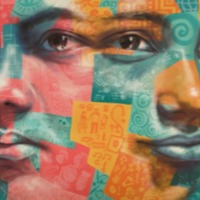
Joy
An orphan who was tricked into leaving her village in northern Nigeria in 1998, Joy Ubi-Ubi fashions the turning-point from freedom to slavery as the moment when she drank blood during a voodoo ritual. Afterwards, once Joy was in Europe, her captors said this ritual meant the “juju” would kill her if she tried to escape. As Joy explains, she was thereby “forced to do the work” of a prostitute. She was enslaved for three years in the deprived Bijlmer district of Amsterdam—home to many West African immigrants. But the narrative also includes a parallel turning-point from slavery to freedom: the moment when Joy was asked to drink something again: a liquid that would make her bleed, and miscarry. This time, she refused to take the drink. Not wanting to abort her pregnancy, she made the decision to escape, then was helped by a West African Pentecostal minister who operates mission houses in Amsterdam. This use of native West African voodoo is a common feature of the slave experience for Nigerian women held in Western Europe (of whom there are around 10,000). The women and girls undergo an initiation ritual before leaving their country: for Joy this included the marking of her face and hands, and laying hands on a “juju” (statue), as well as drinking blood. They are often made to swear to the gods that they will work hard for their employers, and will never mention their real names, run away, or contact the police. Captors threaten the women with punishment by the gods for any disobedience, and warn that any attempt to escape will awaken a curse on their families. Once in Europe they are drugged, then resold. Held in brothels, they have sex with customers but are not paid: Joy notes that all money changed hands before the clients reached her room. Any pregnancies are aborted.

Leah
In February 2016, at a hearing entitled Ending Modern Slavery: Now is the Time, "Leah" testified before the Senate Foreign Relates Committee. She was enslaved in forced prostitition for seven years, and trafficked across the United States, in South Carolina, Florida, Texas, California, Louisiana, Arizona, Illinois, Ohio and Colorado. "Leah" is now an advocate for A21, an organization working against modern slavery.
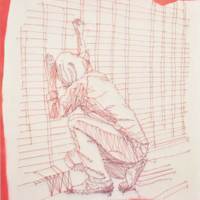
Tethered from The Scarlet Cord installation
The Scarlet Cord by Pamela Alderman is an installation that examines child sex slavery. Her website describes it 'As visitors step inside a 40-foot storage container filled with thirty doors, they enter a secret world. This dark world crosses religious and social economic borders to sell our children for sex. The twisting scarlet cord depicts the trauma bond that connects the children to their traffickers. The weathered doors represent these abused children whose youthful minds have become knotted. Alderman’s art—dedicated to these suffering children tethered within the sex industry—calls for compassionate action.'
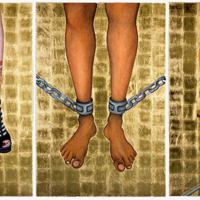
House Slave - Field Slave I and II
'House Slave - Field Slave: A Portrait of Contemporary Slavery' by Nicola Green was first exhibited at the Dulwich Picture Gallery in October 2007. It was then exhibited as part of Haringey's Black History Month at Bruce Castle Museum in October - December 2010. Nicola's triptych is now in the permanent collection at the International Slavery Museum in Liverpool.
Nicola Green's portrait of contemporary slavery 'House Slave - Field Slave' was made for and in collaboration with Anti-Slavery International to commemorate the anniversary of the abolition of the slave trade in 2007. The exhibition consists of a large 'altarpiece' scale triptych with preparatory studies. These are set alongside artefacts of contemporary slavery from the International Slavery Museum in Liverpool and the extraordinary photos and text from Anti-Slavery International, which inspired this work. The painting tells the story of contemporary slavery. There are an estimated 12 million people in the world today who are still enslaved - even though the British slave trade was abolished 200 years ago.
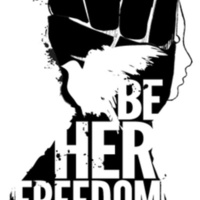
Be Her Freedom
The Be Her Freedom campaign is part pf the A21 movement which comprises of individuals, organizations, government officials, and members of the public who are committed to abolishing injustice in the 21st century. The image replaces the shackled pleading hands of past antislavery campaigns with a clenched fist - a symbol of self-determination and self-liberation.